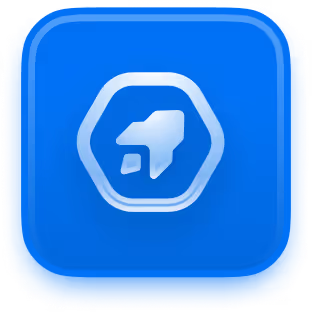_11zon.jpg)
Cold Email Tips and Best Practices for Successful Outreach

Cold emailing is a powerful tool for businesses and individuals looking to expand their networks, generate leads, or establish connections. While social media and other platforms have grown in popularity, cold emails remain one of the most effective ways to communicate directly with potential clients or collaborators.
According to a 2023 report, cold emails have an average open rate of 15-25% and can lead to a 5-15% reply rate when done correctly. However, sending out cold emails without a strategy can result in wasted effort and frustration.
In this article, we will discuss essential tips and best practices for successful cold email outreach. By following these guidelines, you can increase the chances of getting positive responses, growing your business, and making meaningful connections.
The Importance of Personalization in Cold Emails
_11zon.jpeg)
Personalization is one of the most critical elements of a successful cold email. It shows the recipient that you've done your research and that your message is specifically for them, not just a mass email sent to hundreds of people. Personalization makes the email feel more genuine, which increases the chances of a positive response.
Address the Recipient by Name
Always begin your cold email by addressing the recipient by their first name. This small detail can make a big difference in how your email is perceived. People are more likely to engage with a message that feels directed to them personally.
Avoid generic greetings like "Dear Sir/Madam" or "To Whom It May Concern." Instead, use their name to create a personal touch that will make your email stand out.
Reference Their Company or Work
Another way to personalize your email is by referencing something specific about the recipient's company or work. This could be a recent project they worked on, an award their business received, or a blog post they wrote.
By doing so, you demonstrate that you have done your homework and are genuinely interested in what they do. This makes it harder for the recipient to dismiss your email as just another marketing attempt.
Customize the Offer Based on Their Needs
To increase the chances of success, tailor your offer or message to fit the specific needs of the recipient. If you're pitching a service or product, explain how it can solve a problem or provide value for them.
This approach shifts the focus away from what you're selling and instead emphasizes how it benefits the recipient. People are more likely to respond to an email that addresses their pain points or interests.
Keep It Conversational
When writing a cold email, try to make the tone conversational rather than overly formal. This helps establish a friendly connection. A conversational tone also makes the email easier to read and more approachable.
Keep your sentences simple, avoid jargon, and be clear about what you're offering or asking for. A more human approach makes your message feel less robotic and increases the likelihood of a response.
Crafting a Compelling Subject Line

The subject line of your cold email is the first thing the recipient will see, and it plays a huge role in determining whether they will open your email or not. A strong subject line grabs attention and encourages the recipient to click and read more.
Keep It Short and Clear
Your subject line should be short, clear, and to the point. Research shows that subject lines with 6-10 words tend to perform the best, with higher open rates. A clear subject line tells the recipient exactly what to expect and doesn’t waste their time. Avoid long or confusing subject lines that might turn people away.
Personalize the Subject Line
Just like the body of the email, your subject line should also be personalized whenever possible. Including the recipient’s name or company name in the subject line can improve open rates. For example, “John, Here’s How We Can Help Your Business Grow” feels more personal and is more likely to get noticed.
Our Success.ai's AI email writer tool for real-time personalization to craft emails that resonate instantly with recipients based on their current preferences and behaviors, maximizing engagement and impact effortlessly.
Avoid Spammy Language
Stay away from using words or phrases that might trigger spam filters. Phrases like “free,” “guaranteed,” or “make money fast” can often cause your email to end up in the spam folder. Instead, focus on using professional and straightforward language that doesn’t sound like a sales pitch.
Test Different Subject Lines
You won’t always get the perfect subject line on your first try. It’s important to test different variations to see which ones work best. A/B testing allows you to compare two subject lines and find out which one gets better open rates. Over time, this will help you understand what types of subject lines resonate best with your audience.
Writing a Concise and Engaging Body
After a recipient opens your email, the next challenge is keeping them engaged with your message. The body of your cold email should be clear, concise, and compelling to maintain their interest.
Start with a Strong Opening Line
Your opening line is crucial. It needs to grab the reader’s attention immediately. Start with something that resonates with the recipient, such as a compliment about their work, a reference to a mutual connection, or an interesting observation about their industry. A strong opening makes the reader want to continue reading.
Get to the Point Quickly
Don’t waste the reader’s time with long introductions or unnecessary details. After your opening line, get straight to the point of your email. Let them know why you're reaching out and what value you can offer them. Keep your message clear and focused on one main point to avoid confusion.
Include a Clear Call-to-Action (CTA)
_11zon.jpeg)
Every cold email should have a clear call-to-action. Whether you want the recipient to schedule a meeting, reply to your email, or visit your website, make sure to clearly state what you want them to do next. A strong CTA encourages the recipient to take action rather than just reading the email and moving on.
Keep It Short and Sweet
Cold emails should be short and to the point. Ideally, they should be no longer than 150-200 words. Long emails can be overwhelming and may cause the recipient to lose interest. Keep your message focused, avoid unnecessary information, and only include the most important details.
Following Up Without Being Pushy
Following up is an essential part of cold emailing because many people won’t respond to your first message. However, you need to do it in a way that doesn’t come off as annoying or overly aggressive.
Wait a Few Days Before Following Up
Give the recipient a few days to respond before sending a follow-up. Typically, waiting 3-5 days is a good rule of thumb. Following up too soon can make you seem impatient, while waiting too long might cause the recipient to forget about your email altogether.
Provide Additional Value in Follow-Up Emails
When you follow up, try to provide additional value. For example, you could share a useful resource, a relevant article, or an industry update. This not only reminds the recipient of your offer but also shows that you’re genuinely trying to help, not just pushing for a response.
Our unlimited email sending tool helps you easily provide additional value in follow-up emails by allowing you to share relevant resources, articles, or updates. It automates the process, making your follow-ups timely and personalized to keep the conversation going.
Keep the Follow-Up Short
_11zon.jpeg)
Just like your original email, your follow-up should be short and to the point. Don’t repeat everything from your first email. Instead, briefly remind the recipient of the key points and ask if they’ve had a chance to consider your offer.
Space Out Your Follow-Ups
It’s okay to follow up more than once, but make sure you space them out properly. If you haven’t received a response after your second follow-up, wait at least a week before reaching out again. This shows respect for the recipient’s time and prevents you from coming across as too pushy.
Tracking and Analyzing Your Cold Email Performance
Tracking your cold email performance is crucial for understanding what’s working and what’s not. This data will help you make improvements to your email campaigns and increase your success rate over time.
Use Email Tracking Tools
There are various email tracking tools available that allow you to see who opened your email, when they opened it, and whether they clicked on any links. These tools provide valuable insights into how recipients are interacting with your emails, so you can adjust your strategy accordingly.
Measure Open Rates and Click-Through Rates
Two key metrics to track are open rates and click-through rates (CTR). Open rates tell you how many people are opening your emails, while CTR shows how many are engaging with the content inside. By analyzing these metrics, you can determine whether your subject lines and content are resonating with your audience.
Analyze Unsubscribe Rates
If you’re sending emails to a large list, it’s essential to keep an eye on your unsubscribe rates. A high unsubscribe rate could be a sign that your emails are too frequent or not relevant to your audience. If people are consistently opting out, consider refining your messaging and targeting a more specific group.
Keep Improving Your Approach
Cold emailing is an ongoing process that requires constant improvement. Use the data you gather from your email campaigns to make adjustments and optimize your approach. The more you refine your strategy based on real data, the better your results will be over time.
Legal Considerations for Cold Emails
_11zon.jpeg)
Before sending cold emails, it’s essential to be aware of the legal rules and regulations that govern email marketing. Failing to comply with these laws can result in fines and damage to your reputation.
Understand GDPR Compliance
If you’re sending emails to people in the European Union, you need to comply with the General Data Protection Regulation (GDPR). This regulation requires that you obtain explicit consent from recipients before sending them marketing emails. Make sure you understand and follow GDPR guidelines to avoid legal trouble.
Follow CAN-SPAM Guidelines
In the United States, cold emails must comply with the CAN-SPAM Act. This law requires that your emails include an opt-out option and your physical mailing address. Additionally, your subject line must not be deceptive, and you must honor any unsubscribe requests promptly.
Know the Rules in Different Countries
Different countries have different laws regarding email marketing. If you’re reaching out to international prospects, take the time to learn the regulations in each country. For example, Canada’s CASL (Canadian Anti-Spam Legislation) is stricter than the U.S. CAN-SPAM Act, and failure to comply can result in hefty fines.
Regularly Review Your Email List
To stay compliant with email marketing laws, regularly review and clean up your email list. Remove any inactive or unsubscribed users, and make sure you’re only emailing people who have given you permission to do so. A clean email list will not only keep you legally compliant but also improve your open and response rates.
Conclusion
_11zon.jpeg)
Cold emailing can be a highly effective way to reach potential clients, partners, or collaborators, but it requires careful planning and execution. By personalizing your emails, crafting compelling subject lines, writing concise and engaging messages, and following up without being pushy, you can significantly increase your chances of success.
Additionally, tracking your performance and staying compliant with legal regulations ensures that your outreach is both effective and ethical.
For those looking to automate and improve their cold emailing process, tools provided by ourSuccess.ai offer valuable features such as email personalization, tracking, and performance analysis, making your outreach efforts more efficient and successful.


Try Success.ai No credit card required
Unlock unlimited access to 700M+ B2B leads, with unlimited email sending & warm-up. Supercharge your growth now with Success.ai!
















.avif)


.avif)





.avif)






.avif)












.jpg)
-min.jpg)









.avif)
.svg)
.avif)

